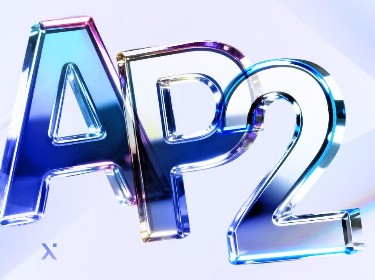Crowdfunding has changed fundraising, yet challenges like transparency and high fees continue to plague the industry. But what if blockchain technology could provide a solution, creating a more secure, transparent, and efficient fundraising ecosystem?
The digital landscape of fundraising has been irrevocably shaped by crowdfunding, a mechanism that empowers individuals and organizations to solicit financial contributions from a broad audience. However, the current crowdfunding ecosystem, while offering undeniable opportunities, is riddled with inherent challenges. Transparency issues, high platform fees, limited global reach, and a lack of robust security measures continue to hamper its full potential.
For instance, a recent study by Statista projected the global crowdfunding market to reach $1,27 billion in transaction value by 2028, highlighting its scale. Backers frequently express concerns about the lack of transparency in fund allocation and project execution, while creators grapple with hefty platform fees that eat into their hard-earned funds. Furthermore, cross-border transactions remain complex and costly, hindering international fundraising efforts.
These persistent problems have spurred a search for innovative solutions, and blockchain technology has emerged as a promising contender. Its decentralized nature, immutable record-keeping, and smart contract functionality offer the potential to address many of the current shortcomings of traditional crowdfunding platforms. Blockchain can enhance transparency by providing an auditable trail of all transactions, reduce costs by eliminating intermediaries, expand global reach through cryptocurrency integration, and bolster security through cryptographic protocols.
In this article, we’ll provide concrete examples and insights based on our real-life project, offering a real-world perspective on building a successful and impactful crowdfunding platform.
Key limitations of traditional crowdfunding platforms
![]()
Operational platform fees
These fees, levied by the platforms themselves, directly impact the net amount a project creator receives. While some platforms charge a flat fee for listing a project, others take a percentage of the total funds raised. This percentage can vary, typically ranging from 3-5%, but can be higher in some cases.
For a project aiming to raise $100,000, a 5% platform fee translates to $5,000, a substantial sum that could be used for product development or marketing. This fee structure can be particularly burdensome for smaller projects with tighter margins, potentially making crowdfunding less attractive. Moreover, some platforms impose additional fees for processing payments or transferring funds, further eroding the final amount received by the creator.
Stringent laws and regulations
Crowdfunding platforms operate within specific legal frameworks that vary significantly across jurisdictions. This creates a complex web of compliance requirements for both platforms and project creators. For instance, regulations regarding investment limits, investor accreditation, and securities offerings differ considerably between countries and even states within countries.
This regulatory fragmentation can make it challenging for projects to attract international investors and can also lead to legal uncertainties. Furthermore, some platforms focus primarily on tangible goods or pre-orders, limiting opportunities for startups seeking equity funding or funding for service-based businesses. This restriction prevents many innovative ideas from accessing this funding source, hindering innovation across various sectors.
Do you want to know more about the state of crypto regulations? Explore here
DIY marketing and advertising
While platforms provide a space to showcase projects, they rarely offer comprehensive marketing support. This means creators are responsible for driving traffic to their campaign pages, often requiring significant time, effort, and potentially additional marketing expenses. Many campaigns fail to reach their funding goals simply due to a lack of visibility.
Studies have shown that projects with strong social media presence and effective outreach strategies are significantly more likely to succeed. However, many startups lack the marketing expertise or resources to execute effective campaigns, leading to disappointing results. This reliance on self-promotion often results in a “winner-takes-all” scenario, where projects with established networks or prior marketing experience have a significant advantage.
Scam startups
Dishonest campaigns, ranging from misleading pitches to outright fraud, leave investors with little to no chance of recovering their funds. This lack of trust is a major hurdle for attracting investment. To foster a more business-oriented environment and gain investor confidence – a significant challenge currently – the crowdfunding sector needs solutions like blockchain technology, which can enhance transparency and security, making it easier to build trust and attract needed capital.
Intellectual property (IP) risk
Many early-stage ventures lack robust IP protection and identity management mechanisms, making them vulnerable to idea theft. The public nature of crowdfunding campaigns, where project details and prototypes are often shared openly, can expose valuable IP to competitors or malicious actors. These actors can then quickly replicate the idea, potentially with greater resources, leaving the original creators at a significant disadvantage. This risk is particularly acute in technology-driven industries where innovation is rapid and IP is a key competitive asset.
How can you ensure you select the optimal blockchain for your project's unique needs? Read in our recent article
Why use blockchain for crowdfunding platforms
![]()
Enhanced equity accessibility
Instead of merely pre-ordering products or making donations, investors can receive fractional ownership of the project or underlying assets. This transforms crowdfunding from a donation-based or pre-sale model into a genuine investment opportunity. For example, a startup developing a new software application could issue tokens representing shares in the company, distributed proportionally to investor contributions.
Worldwide availability
Traditional crowdfunding platforms often operate within specific geographic boundaries, limiting both the pool of potential investors and the reach of projects seeking funding. Blockchain-based platforms transcend these limitations, enabling anyone with an internet connection to participate, regardless of their location. This creates a truly global marketplace for ideas and investment, fostering innovation and cross-border collaboration. This is particularly crucial for projects in developing countries that may struggle to access traditional funding sources.
Real-time provisions
Unlike traditional platforms where funders often wait weeks or months for updates or promised rewards, blockchain-based systems offer immediate verification and tracking of funds. Smart contract development can automatically distribute tokens or release funds upon achieving predetermined milestones, eliminating the need for intermediaries and ensuring accountability. This addresses the “empty promises” problem that has plagued some traditional crowdfunding campaigns, building trust between project creators and their backers.
Peer-to-peer exchanges
In traditional crowdfunding, once an investment is made, it is typically locked until the project succeeds or fails. Blockchain-based platforms enable tokenized assets to be traded on peer-to-peer exchanges, providing investors with the ability to buy and sell their stakes freely. This increased liquidity makes crowdfunding more attractive to investors and can stimulate greater participation. This also creates a dynamic secondary market that can further drive project visibility and value.
Unchangeable campaign laws
By storing all campaign information, including project descriptions, funding goals, and legal documents, on an immutable blockchain ledger, the platform ensures transparency and prevents tampering. Investors can independently verify all information, reducing the risk of scams and fostering greater confidence in the crowdfunding process. This level of transparency is difficult to achieve with traditional centralized platforms.
Decentralized fundraising
Smart contracts can automate fund disbursement based on predefined criteria, ensuring that funds are released to project owners only upon achieving specific milestones. This protects investor funds and provides a clear framework for project execution. Furthermore, decentralized governance mechanisms, facilitated by blockchain technology, can enable stakeholders to participate in decision-making processes, fostering a sense of community ownership and accountability.
Reduced operational costs
By automating processes through smart contracts and eliminating intermediaries, blockchain-based platforms can significantly reduce administrative overhead.This translates to lower fees for both project creators and investors, maximizing the amount of capital available for project development.
Private communication channels
These channels secured by cryptographic techniques offer a secure and confidential way for project creators to communicate with their backers. This is particularly important for projects that involve sensitive information or require confidential discussions.
Flexible fund management
Features like escrow accounts managed by smart contracts, scheduled transfers, and monthly payouts provide greater flexibility and control over fund distribution. The tokenization of real-world assets, facilitated by blockchain, also enables innovative funding models that were previously impossible.
How to integrate blockchain into your existing business infrastructure – discover here
How to create a blockchain-based crowdfunding platform step-by-step
![]()
By following these steps, you can increase your chances of building a crowdfunding platform that empowers creators and connects them with a global community of backers.
Step 1: Identifying your niche and understanding your audience
The first and arguably most crucial step is identifying a specific niche. The crowdfunding market is saturated, so targeting a specific area, such as green energy projects, local community initiatives, or blockchain-focused startups, is essential. This specialization allows for focused marketing and attracts a dedicated community of backers. Thorough market research is paramount.
Analyze existing platforms, identify gaps in the market, and understand the needs of potential users. Conduct surveys, interviews, and focus groups to gather insights into what motivates backers, what types of projects they support, and what features they value in a platform. This user-centric approach will inform the platform’s design and functionality.
Step 2: Defining the platform type and monetization strategy
Different crowdfunding models cater to various needs. The most common types include:
- Reward-based: Backers receive tangible rewards or perks in exchange for their contributions.
- Equity-based: Backers receive equity in the project or company in exchange for their investment.
- Donation-based: Backers contribute to charitable causes or non-profit projects without expecting anything in return.
- Debt-based (peer-to-peer lending): Backers lend money to borrowers with the expectation of repayment with interest.
Choosing the right model depends on your target audience and the types of projects you intend to host. Once the model is chosen, a sustainable monetization strategy must be defined. Common monetization methods include:
- Platform fees: A percentage of the funds raised by successful campaigns.
- Transaction fees: A small fee charged for each transaction on the platform.
- Featured listings: Charging project creators for premium placement or visibility on the platform.
- Premium features: Offering optional paid features, such as advanced analytics or marketing tools.
Step 3: Securing a reliable technology partner
Building a blockchain-based platform requires specialized technical expertise. Selecting a reliable blockchain consultant is crucial for success. Key considerations include:
- Experience in blockchain technologies and web development: Expertise in relevant blockchain platforms (e.g., Ethereum development, Binance Smart Chain, etc) and smart contract development languages (e.g., Solidity).
- Project management capabilities: Established project delivery processes, clear communication, and adherence to timelines and budgets.
- Post-launch support and maintenance: Ongoing support, bug fixes, security updates, and platform maintenance.
Step 4: Developing a minimum viable product (MVP)
The MVP focuses on core functionalities to validate the platform’s concept and gather user feedback. Essential MVP features include:
- Project creation and management: Allowing creators to submit project proposals, set funding goals, and manage their campaigns.
- Backer registration and contribution: Enabling users to register, browse projects, and contribute funds using cryptocurrencies or other accepted payment methods.
- Smart contract integration: Implementing smart contracts for automated escrow, fund disbursement, and reward distribution.
The MVP development process should follow an iterative approach:
- Identify core features: Focus on the essential functionalities for launching and supporting campaigns.
- Build a prototype: Create a basic version of the platform to test user flow and functionality.
- Test with a small group: Gather feedback from early users to identify areas for improvement.
- Build the MVP: Develop a functional version of the platform based on the feedback received.
- Launch the MVP: Release the MVP to a wider audience to gather more comprehensive feedback.
- Iterate and improve: Continuously update and improve the platform based on user feedback and market trends.
Step 5: Conducting user testing and gathering feedback
User testing is crucial for identifying usability issues and ensuring the platform meets user needs. Different types of testing can be employed:
- Usability testing: Observing users interacting with the platform to identify areas of confusion or difficulty.
- A/B testing: Comparing different versions of a feature or design to see which performs better.
- Beta testing: Releasing a pre-release version of the platform to a larger group of users for real-world testing.
Before conducting user tests, define user personas to represent different user segments. This ensures you gather feedback from a representative sample of your target audience.
Step 6: Building a full-scale product and scaling the platform
Once the MVP is validated, the next step is to develop a full-fledged platform with advanced features, such as:
- Advanced search and filtering: Enabling users to easily find projects of interest.
- Integrated communication tools: Facilitating direct communication between creators and backers.
- Analytics and reporting dashboards: Providing creators with insights into campaign performance.
- KYC/AML integration: Implementing Know-Your-Customer, Anti-Money Laundering and Know-Your-Transaction procedures for regulatory compliance.
- Dispute resolution mechanisms: Implementing a fair and transparent process for resolving disputes.
Continuous monitoring and improvement are crucial for long-term success. Regularly analyze platform usage, gather user feedback, and implement updates and improvements to stay ahead of the competition and meet evolving user needs. Scaling the platform involves optimizing infrastructure, expanding server capacity, and implementing efficient data management strategies to handle increasing traffic and transaction volumes.
Explore our extensive portfolio of successful blockchain projects and see how our expertise has empowered our clients to thrive
Real life example by Pixelplex
Our client, KickICO aimed to address the inherent challenges of traditional crowdfunding and Initial Coin Offerings (ICOs), creating a more transparent, secure, and efficient ecosystem for creators, backers, and advisors. This case overview details the project, the challenges faced, the solutions implemented by our team, and the remarkable results achieved.
The challenges
The existing crowdfunding and ICO landscape presented several significant challenges:
- Lack of backer protection
- High fees and hidden costs
- Barriers to entry
- Market fragmentation
- High project failure rate
KickICO aimed to address these issues by creating a synergistic platform that would benefit all stakeholders.
The solution
PixelPlex collaborated closely with KickICO to develop a robust and innovative platform built on Ethereum smart contracts. Our team focused on several key areas:
- Smart contract development: We developed robust smart contracts for ICOs and the KICK token, including an innovative ICO contract generator. This automated the process of creating ICO contracts, making it easier and more accessible for project creators. The smart contracts ensured transparency and security by automating fund distribution and refund processes.
- KICK token integration: We integrated the KICK token into the platform, enabling its use for launching crowdfunding projects, acquiring services within the KickICO ecosystem, and rewarding backers. The token’s unique generation mechanism, tied directly to campaign support, prevented oversupply and maintained its value.
- Web development and API integration: Our team built a robust server layer with a dedicated API to seamlessly connect the blockchain to the user interface. This ensured smooth data flow and a user-friendly experience. The API provided access to KICK data, facilitating integration with other platforms and services.
- Platform features implementation: We implemented several key features to enhance the platform’s functionality:
ICO with a hidden cap: This feature allowed projects to set a target funding goal without revealing the maximum amount they were willing to raise, creating a sense of urgency and encouraging early investment.
Token dividend distribution: Smart contracts automated the distribution of token dividends to holders, ensuring transparency and efficiency.
ICO smart contract generator: This user-friendly wizard simplified the process of creating and launching ICOs on the platform.
Our team’s approach
Our team worked closely with KickICO throughout the development process, employing an agile methodology to ensure flexibility and responsiveness to evolving requirements. We focused on:
- Understanding the client’s vision: We dedicated time to thoroughly understand KickICO’s vision and goals, ensuring that our development efforts aligned perfectly with their objectives.
- Technical expertise: Our team leveraged its deep expertise in blockchain technology, smart contract development, and web development to create a robust and scalable platform.
- Iterative development: We employed an iterative development approach, allowing us to gather feedback and make adjustments throughout the development process.
- Rigorous testing: We conducted thorough testing to ensure the platform’s security, stability, and performance.
The results
![]()
The KickICO platform achieved remarkable success, validating the innovative approach and the effectiveness of our collaboration:
- “ICO of the Year” award: KickICO received the prestigious “ICO of the Year” award upon its launch in 2017.
- Significant funding raised: The platform facilitated the raising of over $500 million for various projects.
- Thriving community: KickICO cultivated a strong community of over 55,000 participants.
- Token listing on major exchanges: The KICK token was listed on ten leading cryptocurrency exchanges, increasing its accessibility and liquidity.
- Successful project launches: Over 35 successful startups launched through the platform, including prominent names like INS, Micromoney, Hacken, and Universa.
The KickICO project exemplifies PixelPlex’s commitment to developing innovative blockchain solutions that address real-world challenges. By combining our technical expertise with a deep understanding of the client’s vision, we helped create a groundbreaking platform that transformed the crowdfunding landscape.
Key features of a blockchain-based crowdfunding platform
![]()
Transparent project registration
Unlike traditional platforms where information can be altered or manipulated, blockchain ensures immutable records. When a project creator registers on a blockchain platform, all details – project description, team information, funding goals, and promised rewards – are recorded on the distributed ledger. This transparency fosters trust, as backers can verify the authenticity of the project and track its progress in real-time.
Smart contract and escrow
Smart contracts act as an escrow service, holding funds securely until the project meets its funding goal within the stipulated time frame. Upon successful completion, the smart contract automatically releases the funds to the project creator. If the goal isn’t met, the funds are automatically returned to the backers, ensuring accountability and eliminating the risk of misappropriation.
Automated refunds
In traditional crowdfunding, obtaining refunds can be a complex and time-consuming process. Blockchain platforms streamline this process through smart contracts. If a project fails to reach its funding target, the smart contract automatically triggers refunds to backers, eliminating the need for manual intervention. This automated refund mechanism enhances backer confidence and encourages participation.
Reward distribution
Project creators issue digital tokens representing various benefits, such as early access, product discounts, or even equity in the project. These tokens are distributed to backers based on their contribution level and can be easily tracked and managed on the blockchain. This transparency ensures that rewards are distributed fairly and efficiently.
Backer authentication and security
Blockchain’s cryptographic security features protect user funds and data from unauthorized access and cyberattacks. Furthermore, blockchain platforms often implement KYC and AML procedures to verify backer identities and prevent illicit activities. This robust security infrastructure fosters a safer and more trustworthy crowdfunding environment.
Data-driven analytics
Blockchain platforms record all transactions and activities on the immutable ledger, creating a rich source of data. This data can be used to generate valuable insights into campaign performance, backer demographics, and overall market trends. Project creators can leverage these insights to refine their strategies and improve their chances of success.
Dispute resolution mechanisms
While smart contracts automate many aspects of the crowdfunding process, disputes can still arise. Blockchain platforms often incorporate dispute resolution mechanisms, such as decentralized arbitration systems, to provide a fair and transparent process for resolving conflicts between project creators and backers.
How PixelPlex can help
Recognizing that crowdfunding offers a cost-effective alternative to traditional financing by disintermediating banks and investment firms, PixelPlex focuses on building platforms that seamlessly connect project creators with a broad network of potential backers. This direct interaction fosters community and facilitates efficient capital raising.
Our expertise extends beyond simply just blockchain development services. We provide strategic guidance on selecting the most suitable crowdfunding model for your specific needs. Whether you envision a donation-based, rewards-based, equity-based, or debt-based platform, our experts can tailor the solution to your vision. They’ll offer insights into effective monetization strategies, ensuring the platform’s long-term sustainability and profitability.
From initial concept and platform architecture to development, testing, and deployment, PixelPlex provides end-to-end support. If you’re unsure where to begin your crowdfunding journey, contact us to discuss and bring your platform to life.




